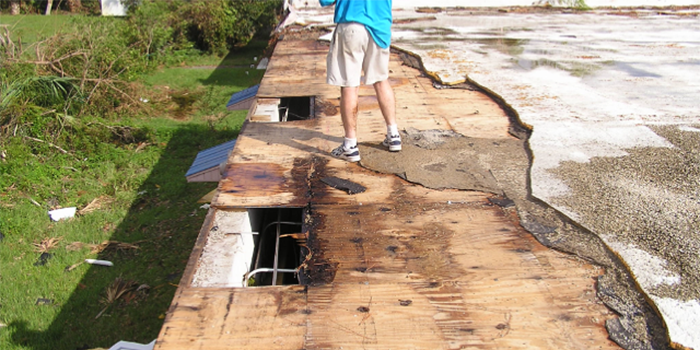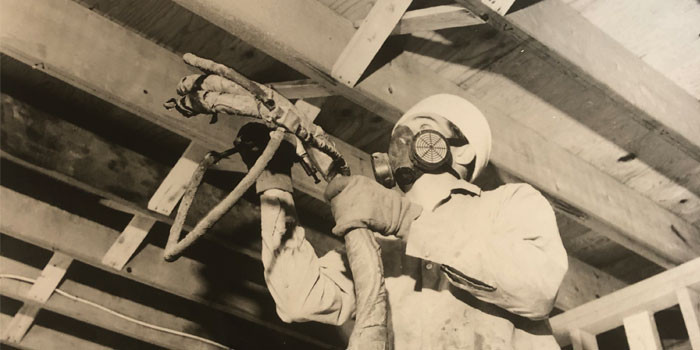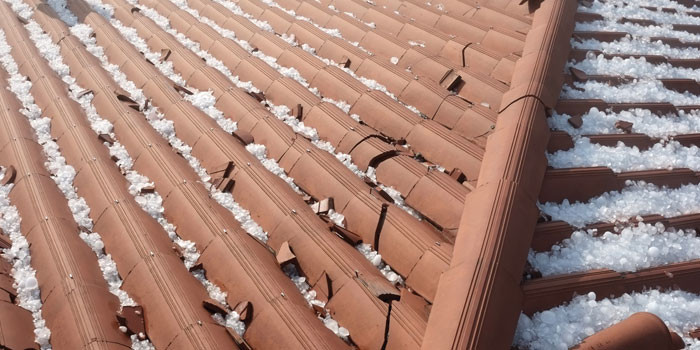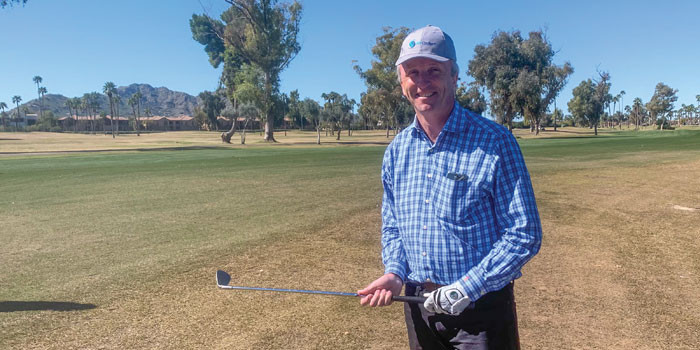The SPF Industry's Global Growth


Late Summer 2019 - The spray foam industry in the U.S. and Canada is thriving, but how is the market fairing in other parts of the world? The Spray Foam Magazine team were curious and investigated why certain countries are finally beginning to embrace foam insulation.
The United States has been at the forefront of building insulation innovation for the last thirty years. However, it was first discovered before the 1940s by a German industrial chemist named Otto Bayer. Polyurethane (PU) foam was then introduced to the U.S. by David Eynon, who was the president of Mobay Chemical Corporation at the time.
PU foam was originally used on military airplanes during World War II, and it was industrialized about 30 years after. The spur of this development happened after the U.S. energy crisis of the 1970s. Energy consumption increased at an alarming rate coinciding with a decline in domestic oil production, which forced the U.S. to rely on foreign imports. Homebuilders and homeowners wanted to improve energy efficiency by avoiding the dependence on heavily depleting resources. The common use of spray foam as insulation is still a relatively new concept in many other foreign markets.
The building industry in the UK and Ireland appears to be making considerable steps in environmental matters and energy reductions. Legislation is becoming more comprehensive in its approach to ensuring building methods are respectful of the environmental impact on the natural world.

The data shows that the Hong Kong market is adopting the spray foam use quicker than other markets.
The UK currently has a number of funding schemes where old homes with no energy saving methods can be insulated for free. This endeavour is in place thanks to the “Big 6,” who are the United Kingdom’s largest energy suppliers of gas and electricity. These companies have an obligation to ensure they are making significant improvements across the country by reducing carbon emissions. In comparison, Scandinavia is possibly the world’s leader in implementing an environmentally friendly approach while instigating green legislations. These tactics are influencing decisions made in the UK market and neighboring European countries.
The UK is vastly smaller than the U.S., however, there are a multitude of different spray foam distributors present in the market. As a result, contractors may find themselves confused on which spray foam to use. It can range from a reliable foam with top quality ingredients from a manufacturer who has been in existence for over 40 years to a cheaper product, which doesn’t have the same reassurances and risk problems in the future.
Presently playing catch up with the American market, the UK distributors are making efforts to educate the construction industry on quality products. They aim to make buyers and contractors as comfortable with the UK spray foam as they are in the U.S.
The U.S. has been involved in spray foam for 50 years, exposing the property owners and industry specialists to its benefits and quality brands, enabling product awareness to grow. Whereas, the accessibility of spray foam as an insulation alternative in the UK has only been readily available for the last 10 years.
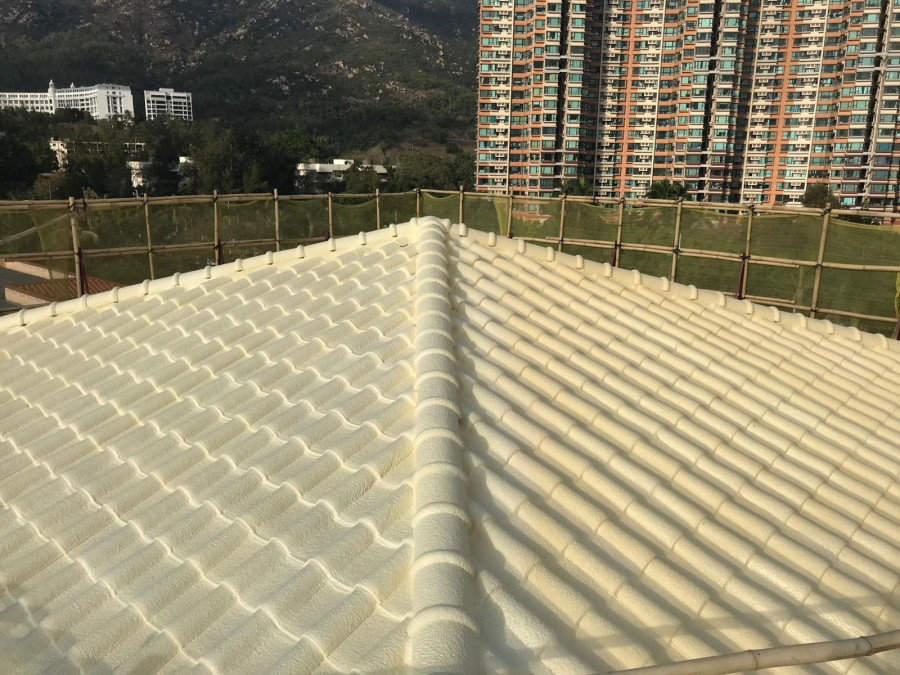
Lapolla 4G foam (above) and a coating (below) applied here to the roof of a building in the Chinese city.
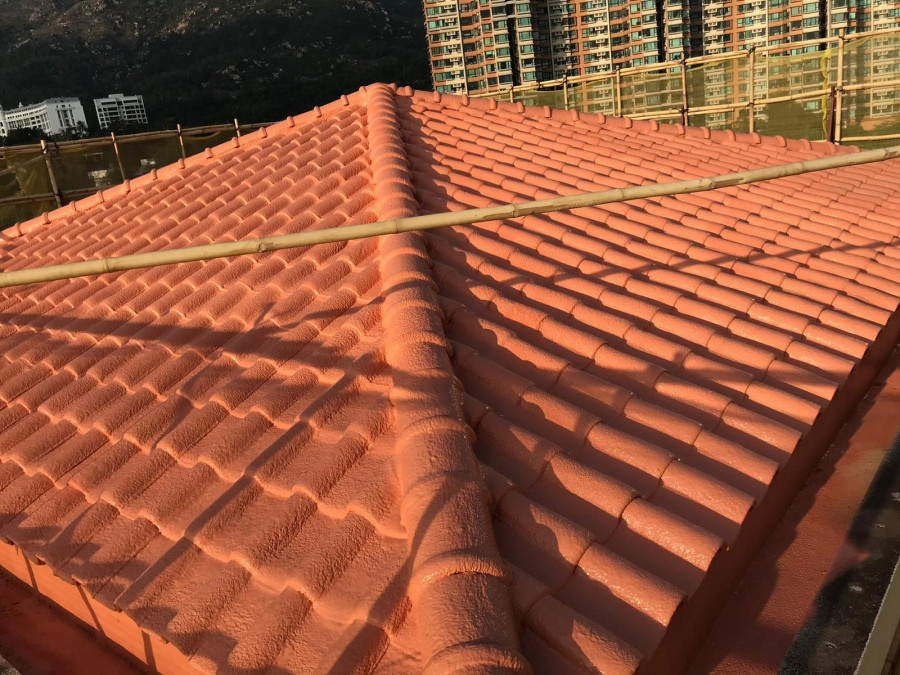
Interestingly, Ireland is ahead of the game and has been using spray foam on an industrial scale for around 15 years. Companies like Lapolla foam in Hong Kong are currently on a smaller scale and have only been distributing there for around two years.
When analyzing the Hong Kong market, it has become evident that the uptake of people wanting to use spray foam has been much quicker than the UK and Scandinavia. This could possibly be due to the cultural mind-set and the quest for versatility and innovative materials, which will benefit the product user. European cultures can appear to be more skeptical and possibly set in their ways. This thought is however slowly changing, due to great product results.
A few benefits of spray foam over traditional insulating materials are thermal capabilities, innovative building science, and acoustic advantages, which are all highlighted when pitching the product to these markets. In addition to these superior qualities, the ability to manufacture SPF on site, results in a speedy install and limited waste. There are also additional features that play a pivotal role while selling spray foam in the current climate, such as environmental consciousness and the demand to use products which have little impact on natural resources both in the manufacturing and installation process.
Lapolla UK’s CEO Steve Jewell notes that a number of their products are environmentally conscious, including post-consumer recycled content in the form of 3000 recycled plastic bottles. Jewell states, “I feel it is important for a customer to remember that spray foam is a single-shot insulation product and will not need replenishing. This means that once installed, people are saving energy and money from day one, until the spray foam or the building is removed.”
The residential market within the UK continues to grow annually at a substantial rate. This is made up of existing sales companies gaining more business and successfully expanding. The commercial sector is also increasing, with building professionals and architects approaching spray foam companies and specifying it for commercial insulations. It has become apparent that the speed of installation, airtightness, and thermal capabilities are very desirable and are most welcome in the current UK climate.
The UK has some very old buildings, some of which date back thousands of years. Jewell explains the history of insulating some of these old buildings. “In the past, insulating older buildings adequately has been a nightmare. The depth of rafters is often shallower than modern buildings, which doesn’t allow much insulation depth. This has meant that creating a warm roof system has been impossible making additional benefits unobtainable.
With closed-cell applications, however, and the Lapolla FL 2000-4G having such a magnificent R-value, we are now able to carry this out and achieve very desirable U-value results and create the desired warm roof system. Secondly, obtaining a complete sealed envelope which achieves the desired airtightness is also impossible with any other forms of traditional insulation. Again, with spray foam this is not a problem at all. Lastly, in closed-cell applications, superb structural benefits and racking strength are added. This is great at bracing older roofs that are perhaps tired and benefit from the additional support.”
The Technical Manager of Lapolla UK, Pete Roseveare, recently carried out some studies on the benefits of spray foam insulation on sound proofing, which is also an issue when insulating older properties in the UK. He contacted three of the UK’s biggest suppliers of traditional insulating material and found the same answer from all three.

The accessibility of spray foam as an insulation alternative in the UK has only been readily available for the last 10 years.
They all stated that their generic insulation was not good at sound-proofing, so no sound coefficient details were available, and if he wanted something specifically for its acoustic benefits then a much more expensive product would need to be purchased.
Last year Lapolla UK carried out their own case study of a property located directly below a flight path of Heathrow Airport. Decibel readings were documented prior to an open-cell foam application and a result of 83.0 dBA (decibels) was recorded. After the 150 mm installation the reading had reduced to 46.5dBA making a significant and positive impact on sound proofing through spray foam insulation.
The UK market is currently very strong with most applications using open Cell foam. The team at Lapolla UK also say their FL 2000-4G closed-cell foam is their most popular exported product. This is mainly due to the Scandinavian market where they require a greater R-value due to the much colder climate.
As the use of spray foam is climbing in places like the UK, Ireland, Scandinavia, and Hong Kong, the demand for quality products is climbing too. Many class products are entering these markets and companies who are investing in educating these places are confident in the growth of their organization and their market share.
Disqus website name not provided.



